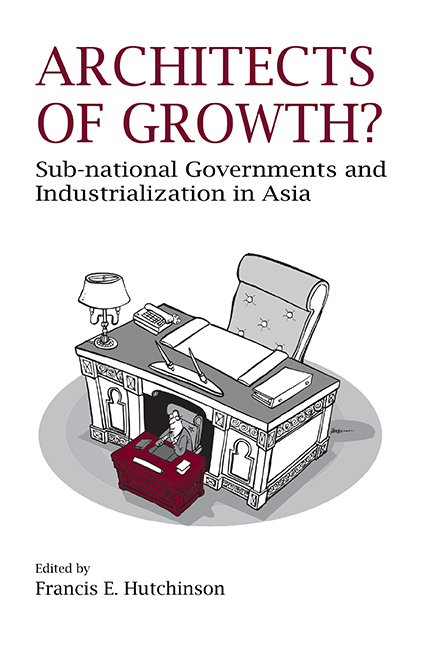Book contents
- Frontmatter
- Contents
- List of Tables
- List of Figures
- Foreword
- Preface and Acknowledgements
- Contributors
- Abbreviations
- I Introduction and Industry Overview
- II Cases from Industrializing Southeast Asia
- III Cases from China and India
- IV Cases from Industrialized Countries
- 9 The Development of Singapore's Electronics Sector
- 10 The Evolution of an Industrial Cluster and Its Policy Framework: The Case of Gumi City, Korea
- 11 The Case of the Electronics Sector in Kaohsiung Municipality, Taiwan
- 12 Sub-national Policy and Industrial Transformation in Conclusions
- V Conclusion
- Index
11 - The Case of the Electronics Sector in Kaohsiung Municipality, Taiwan
from IV - Cases from Industrialized Countries
Published online by Cambridge University Press: 21 October 2015
- Frontmatter
- Contents
- List of Tables
- List of Figures
- Foreword
- Preface and Acknowledgements
- Contributors
- Abbreviations
- I Introduction and Industry Overview
- II Cases from Industrializing Southeast Asia
- III Cases from China and India
- IV Cases from Industrialized Countries
- 9 The Development of Singapore's Electronics Sector
- 10 The Evolution of an Industrial Cluster and Its Policy Framework: The Case of Gumi City, Korea
- 11 The Case of the Electronics Sector in Kaohsiung Municipality, Taiwan
- 12 Sub-national Policy and Industrial Transformation in Conclusions
- V Conclusion
- Index
Summary
Introduction
As one of the Four Asian Tigers, Taiwan is known for attaining exceptionally high growth rates and rapid industrialization from the 1960s to the present. With a per capita income of US$70 at the end of World War II to US$2,280 by 1980 (Kuo, Ranis and Fei 1981) and US$18,458 in 2010 (International Finance Corporation 2012), the country's growth has been phenomenal. Beyond this, it is one of the few countries to have successfully engineered both structural and sectoral transformation. In addition to Taiwan's economy experiencing a large-scale shift from agricultural to manufacturing activities, its firms have emerged to become market and technology leaders in a range of areas.
Kaohsiung, Taiwan's second city, has played an important role in the country's development. With a total population of 2.77 million people, it is the country's centre for heavy industry, with important steel-making, ship-building, and petrochemical operations (UHDD 2010). Kaohsiung is also the site of the island's biggest harbour and its port used to be the third largest in the world. As an educational city, it ranks second only to Taipei, with 12 universities and colleges in the metropolitan region. Kaohsiung has also been long associated with export-oriented manufacturing, housing the country's first export processing zone (EPZ) and an important cluster of leading electronics majors.
Taiwan has a multi-levelled government structure, with special municipality, provincial city, and county governments. However, while the role of the central government in supporting the country's industrialization is well-documented, relatively little research has been carried out on the role of Taiwan's sub-national governments. While the country's political system has traditionally been centralized, municipal leadership positions were made elective in 1994, and important responsibilities regarding taxation and economic development have progressively been decentralized.
This chapter will therefore examine the electronics sector in Kaohsiung and the role of Taiwan's central and municipal governments in fostering its development. To this end, it is divided into four sections. The first section will provide an overview of Kaohsiung's economy and its electronics sector. The second section will discuss central government policies which have been implemented to promote the development of Taiwan's electronics sector, including those that affect Kaohsiung. Following that, Kaohsiung's local institutions and policies will be examined, seeking to establish how and whether they have played a role in the sector's development. The fourth and final section will conclude.
- Type
- Chapter
- Information
- Architects of Growth?Sub-national Governments and Industrialization in Asia, pp. 305 - 328Publisher: ISEAS–Yusof Ishak InstitutePrint publication year: 2013

